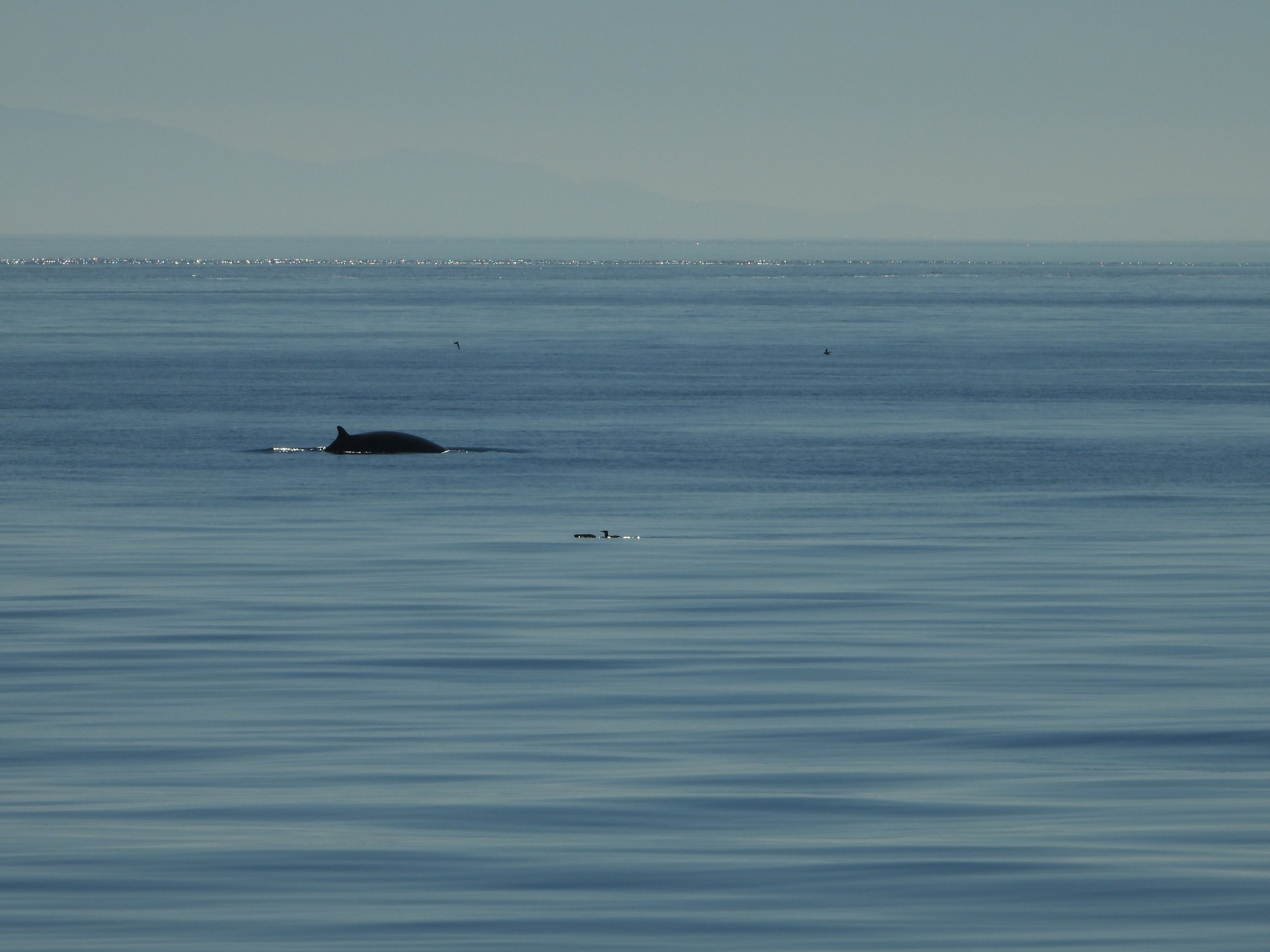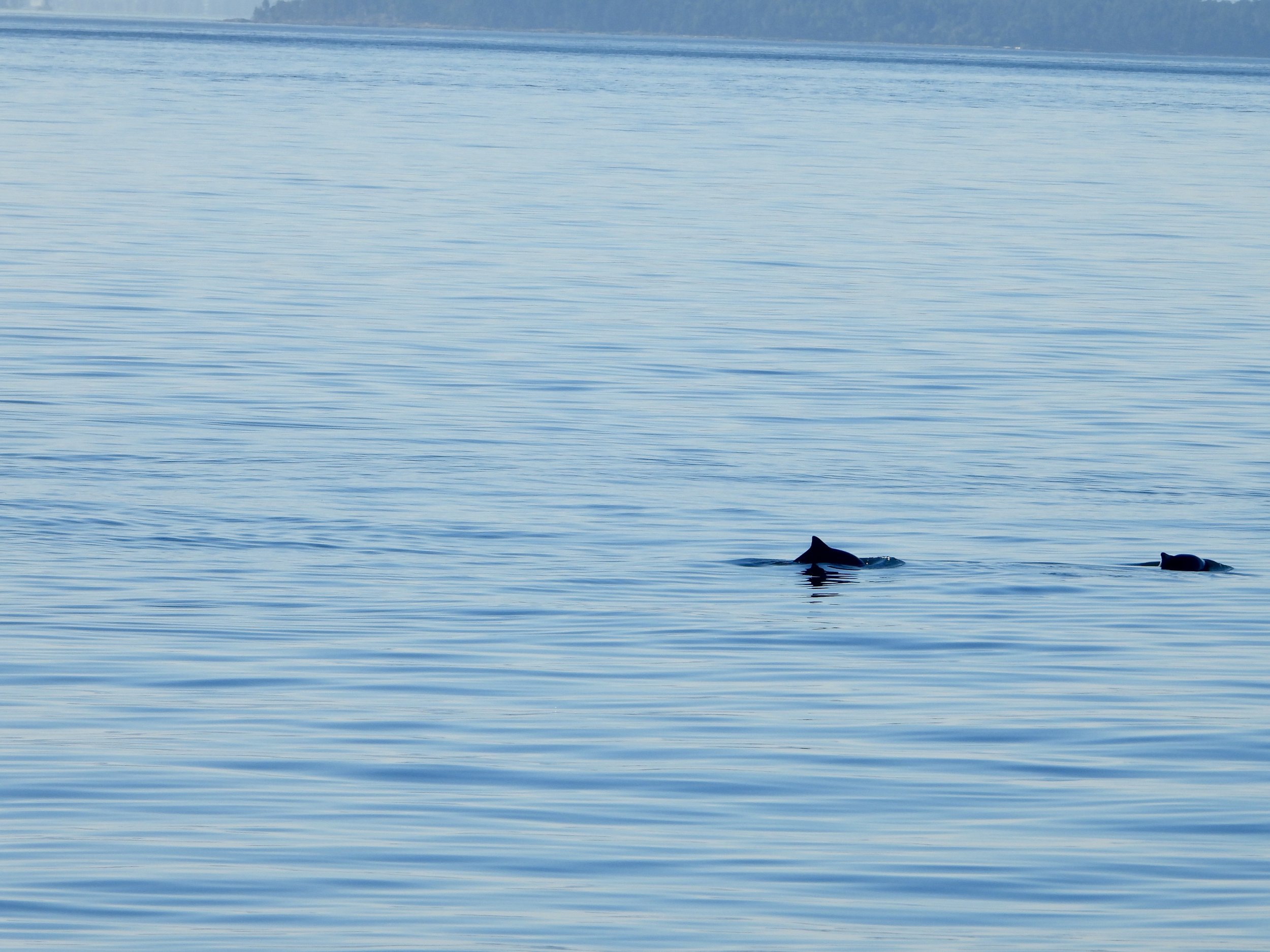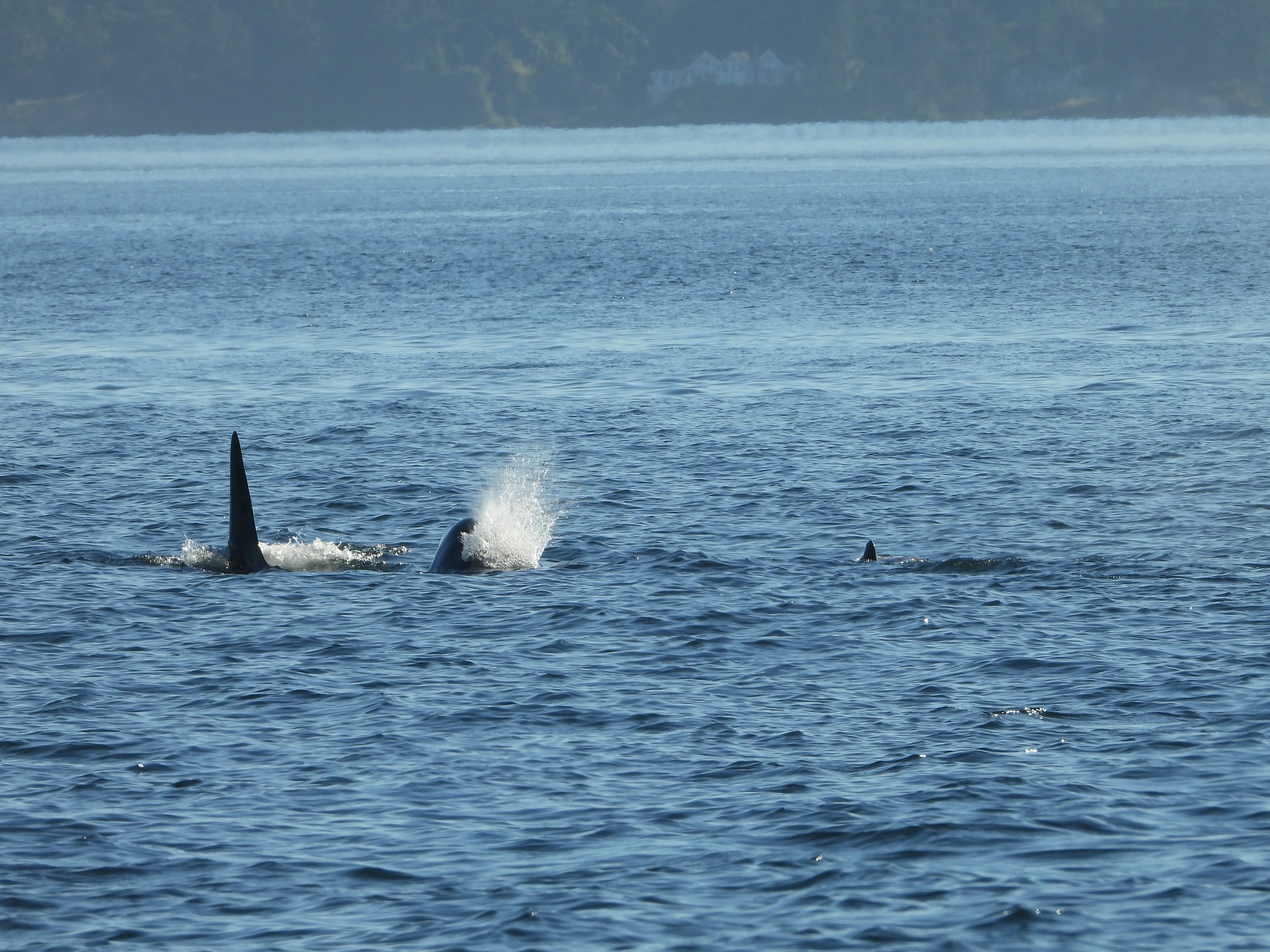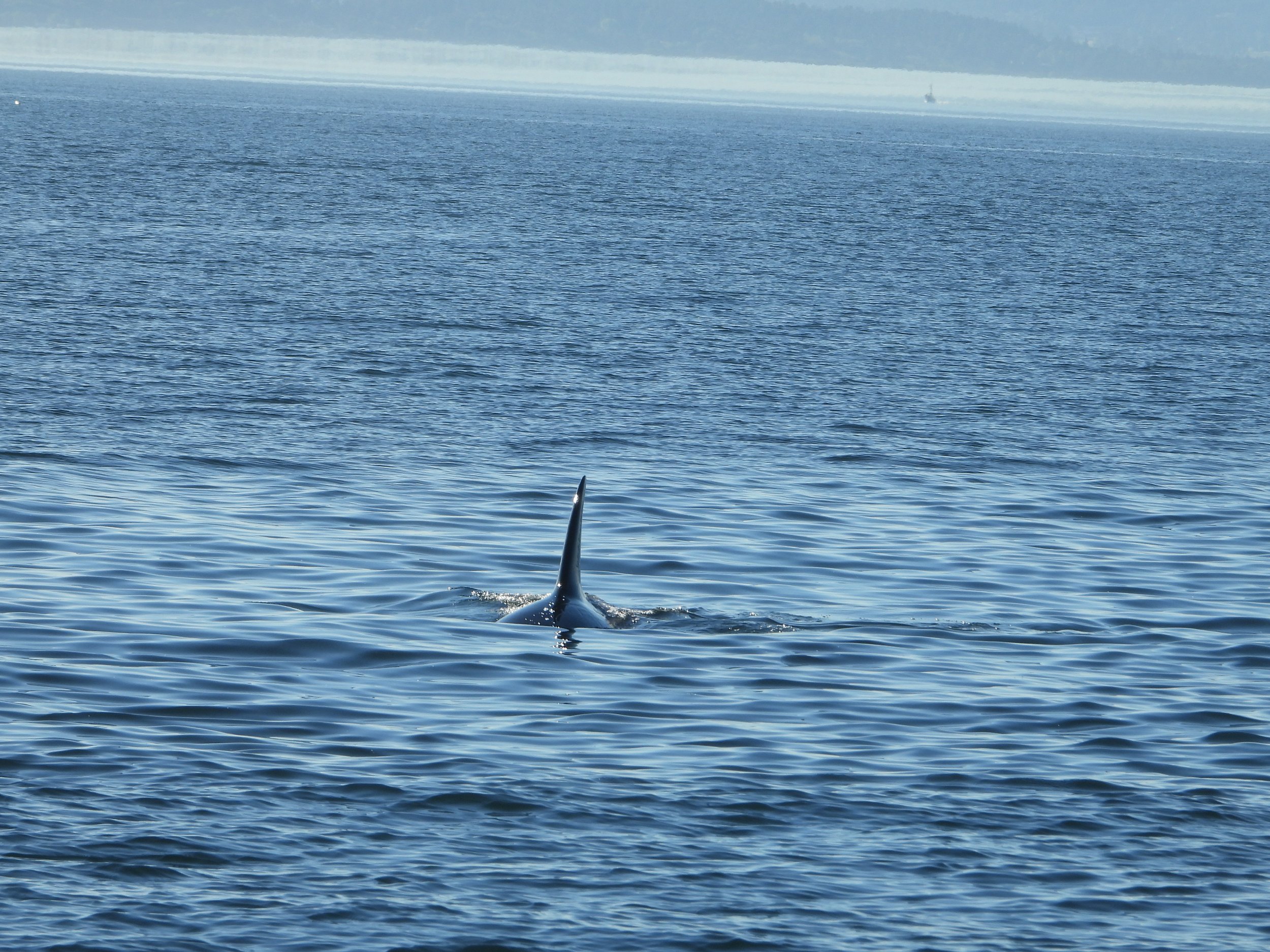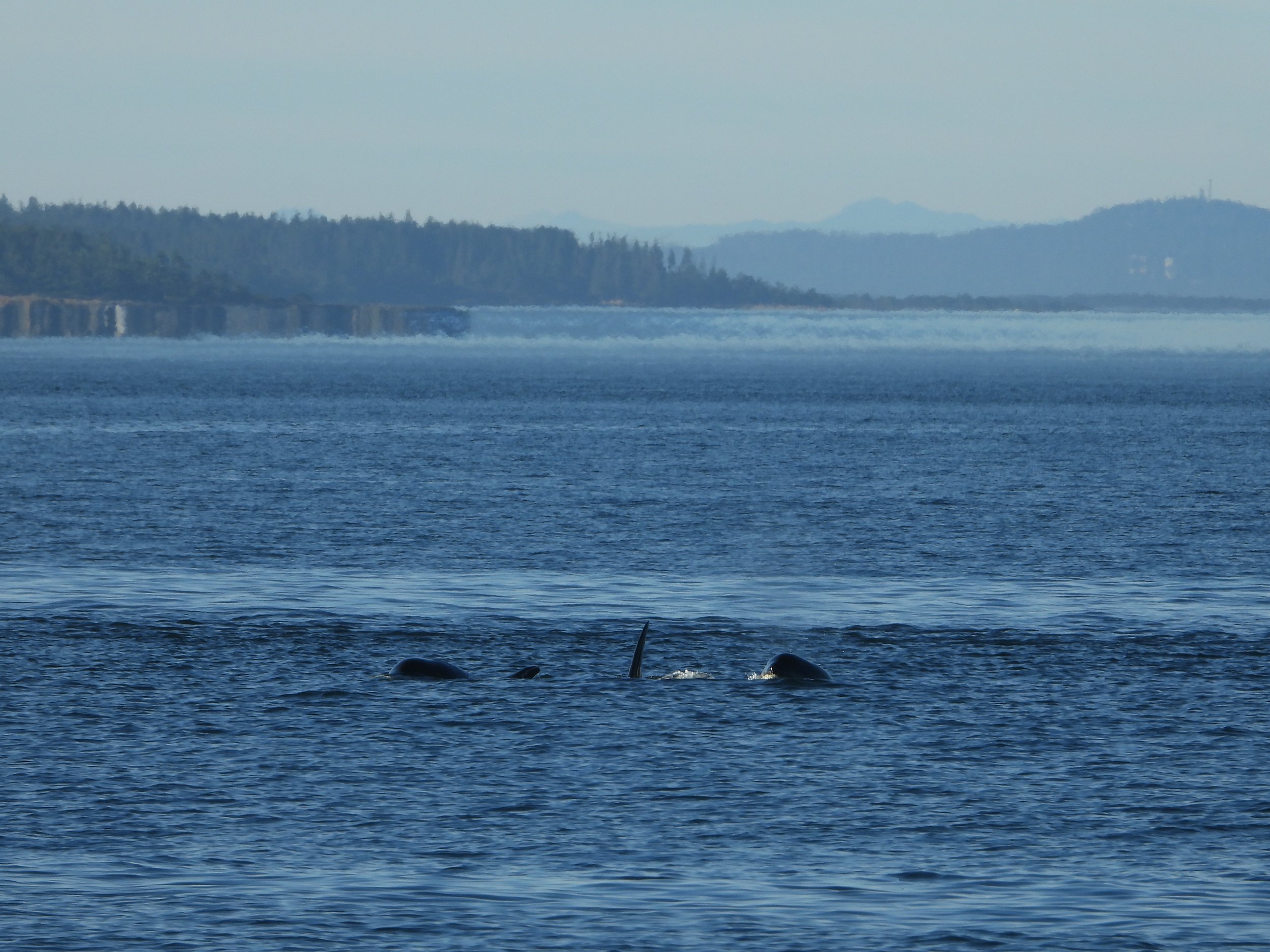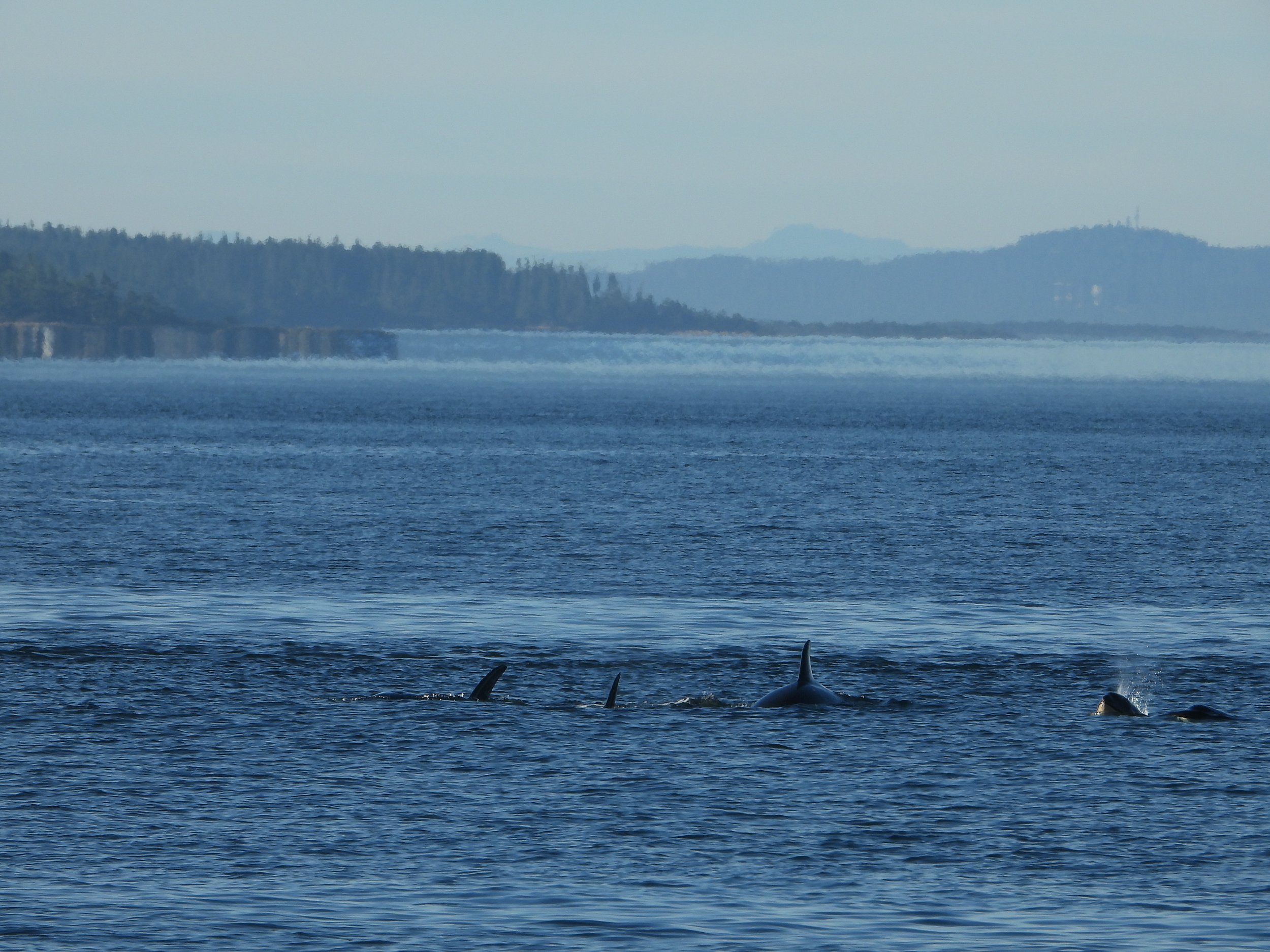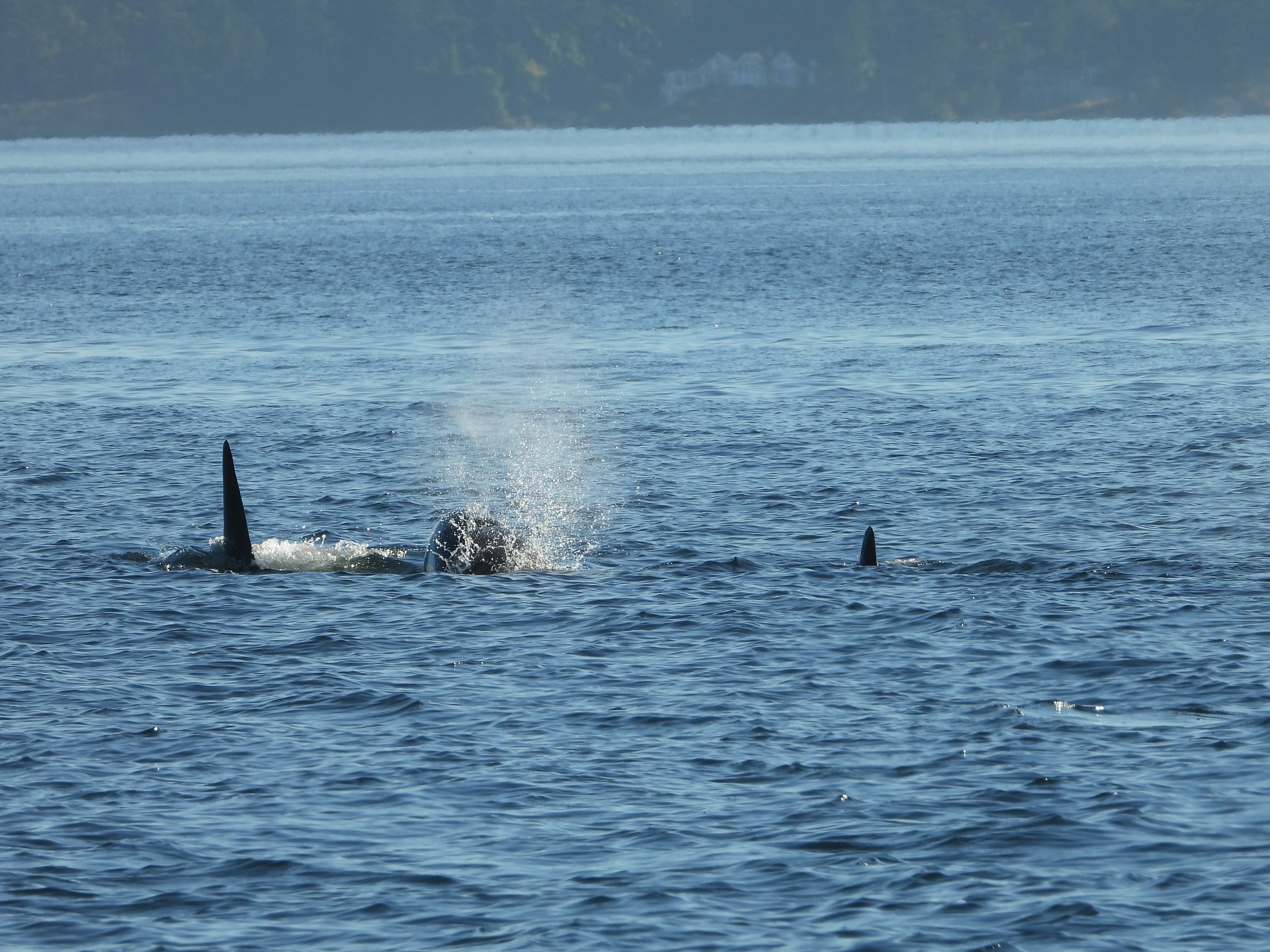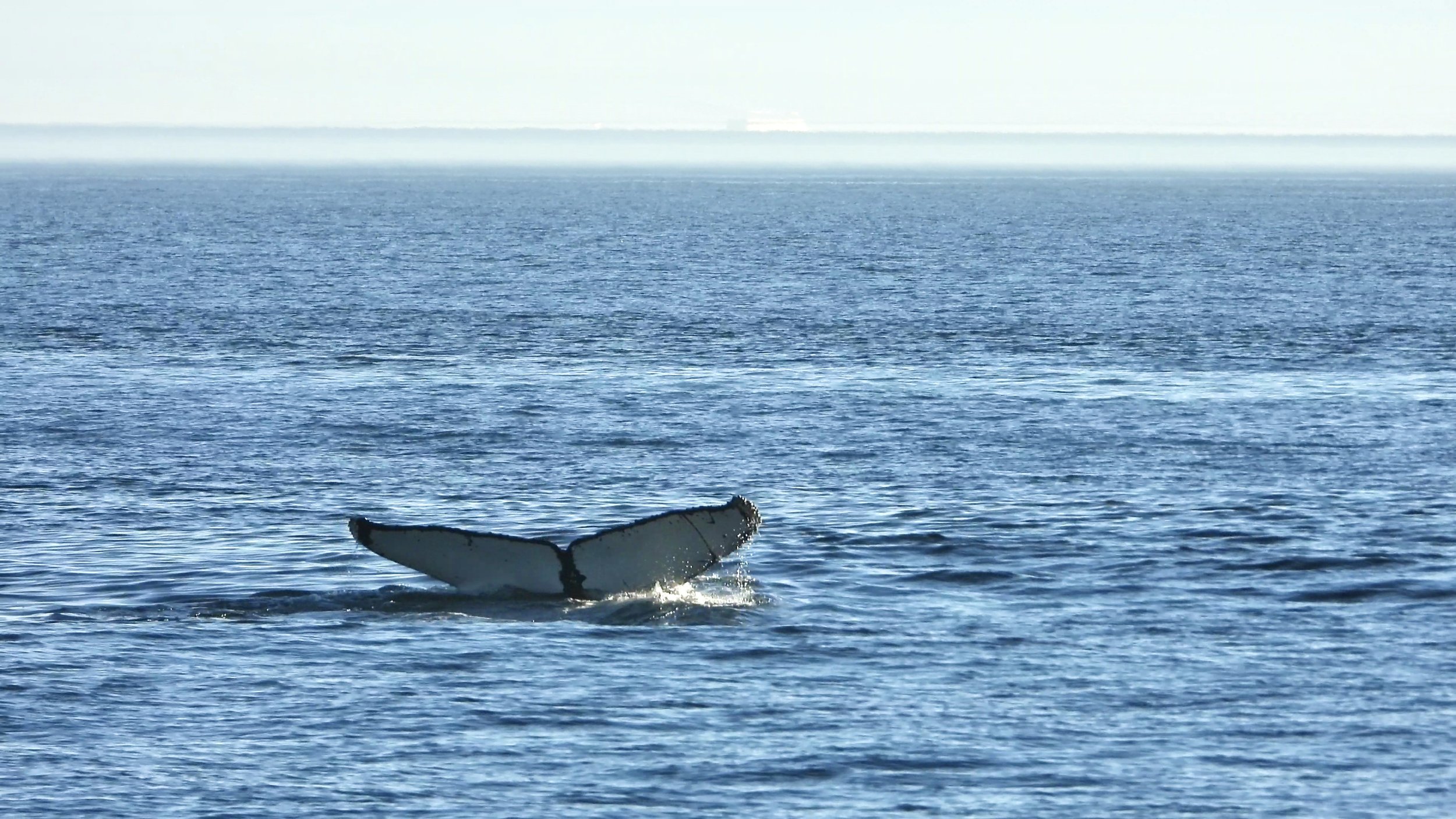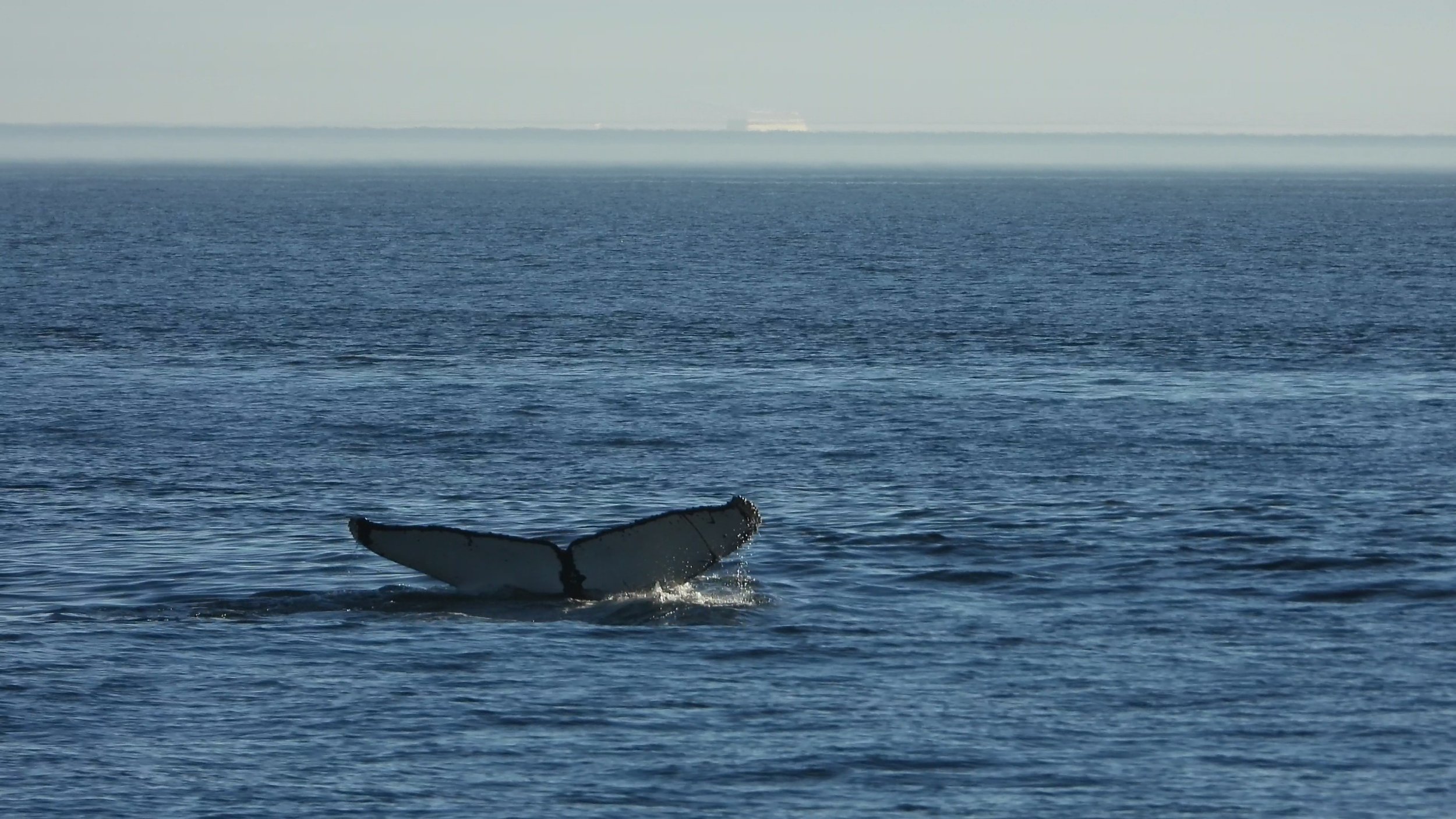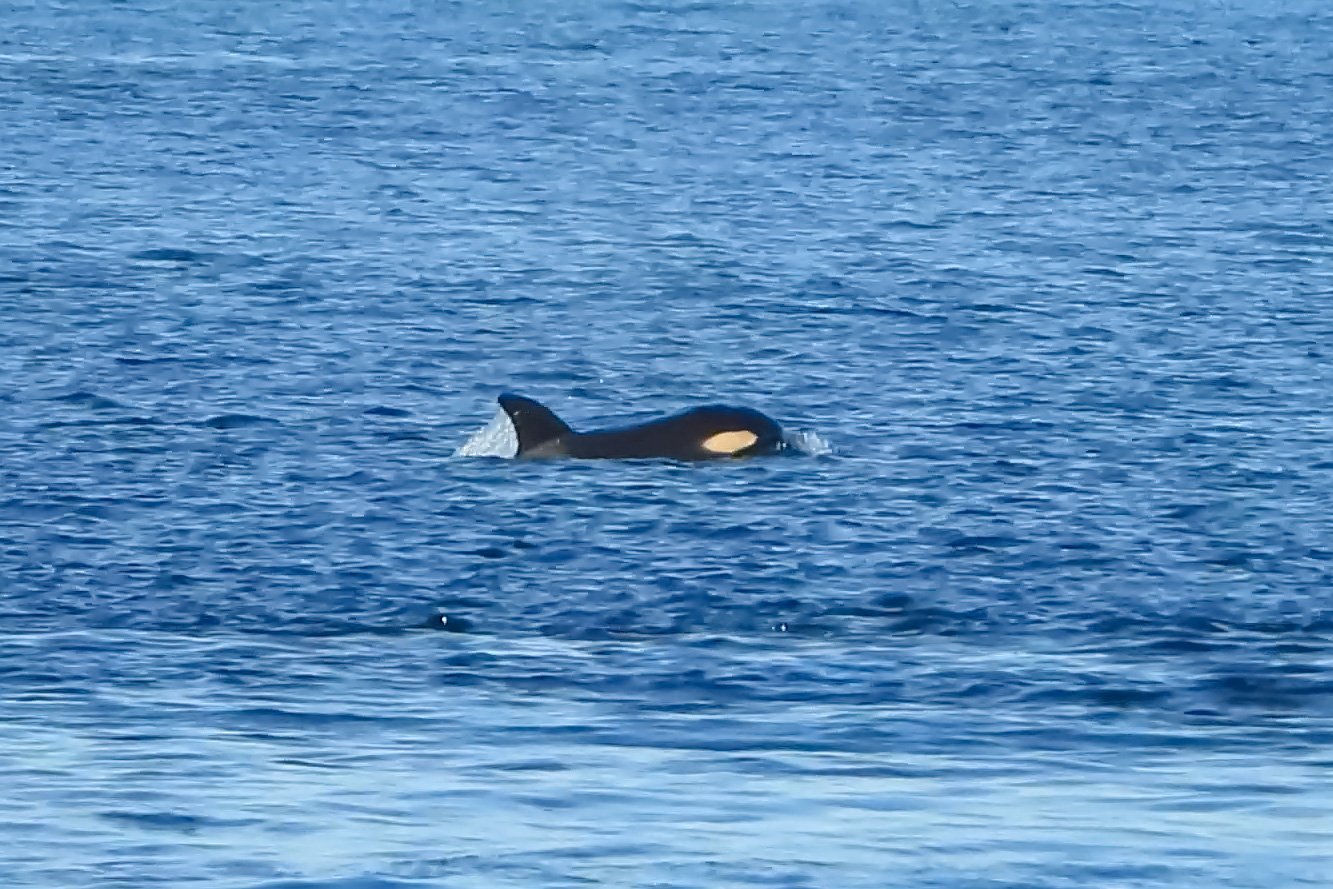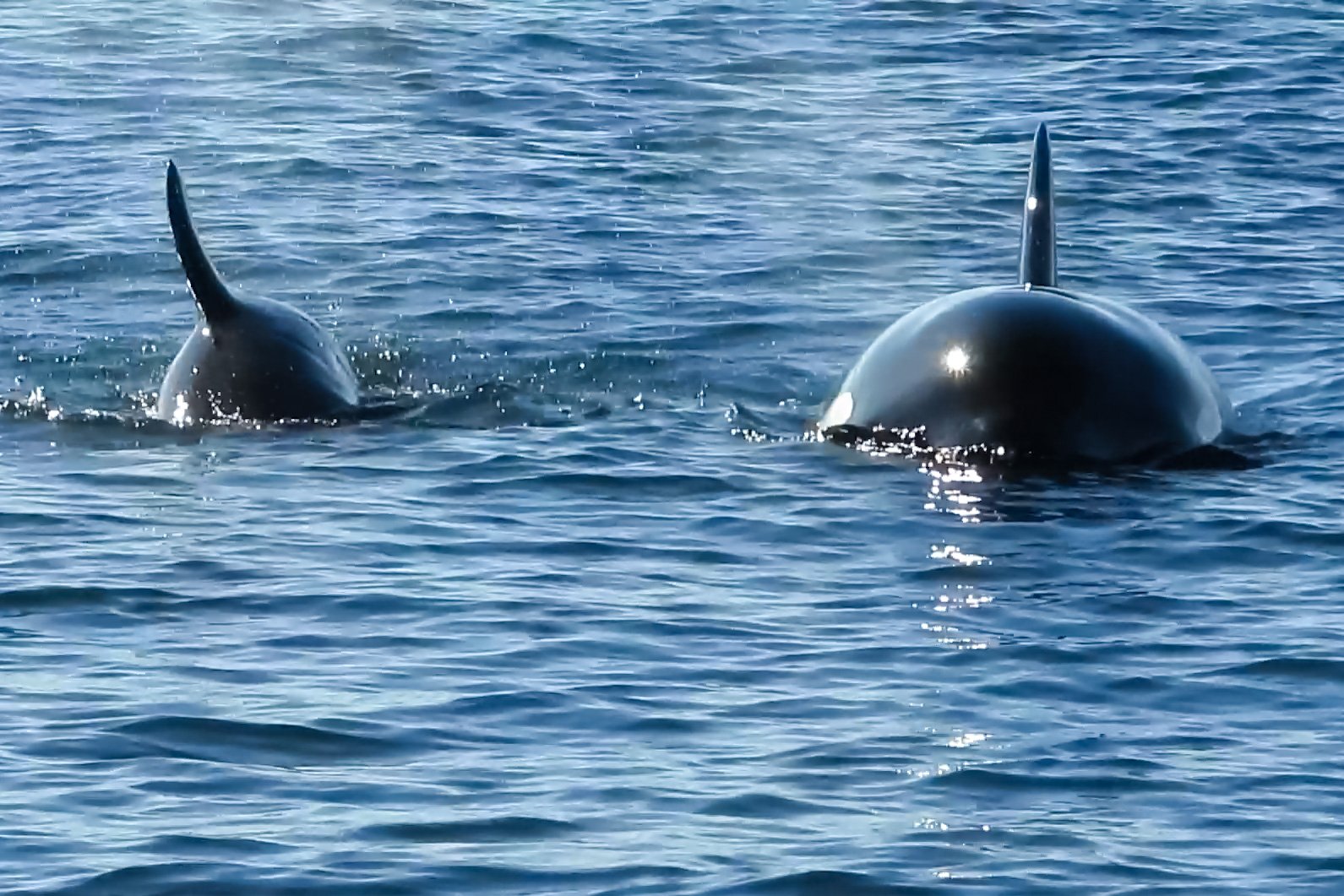August 15, 2023: T75Bs, T77C, T77D, & MMZ0067 | Haro Strait
Date: Tuesday, August 15 2023
Location: Strait of Juan de Fuca & Haro Strait
Weather: Sunny, 77 degrees Fahrenheit with 6mph winds from W
Tide: Flood
Pods/Matrilines/Individuals: T75Bs, T77C & T77D, Humpback MMZ0067, Minke Whale
Total Whale Count: 9
Behaviors: Traveling
Boat Count: 4 (4 whale watch boats)
*Please note that since the date of this encounter, the new calf exhibited signs of malnutrition and a condition called peanut-head, and has since gone missing and is presumed to be deceased.
It had been quite an unusual summer with little to no orca sightings within Puget Sound, so we decided to take a trip on the water and set out with Outer Island Excursions. It was a very hot summer day and we joined the afternoon tour out of Skyline Marina.
There were early reports from a FB group of a group of orcas in the middle of Haro Strait, off of Lime Kiln Point State Park. Heading that way, we started the trip at the South end of San Juan Island, where Haro Strait meets the Strait of Juan de Fuca. There, we spent a short time with a minke whale that was foraging.
After viewing the minke, we departed northbound to find the group of orcas that were just a few minutes north of us. The group of orcas was the T75Bs with the newest calf, along with T77C and T77D. (The new calf had first been seen in early July and was last seen September 10th.) During the time the calf was alive, it was not clear who the mother was, as the new calf had been associating with both T75B Pebbles and her first offspring T75B2 Jasper. At the time, the sex of T75B2 was unknown, and this whale is only around 8 years of age, which would make it one of the youngest known whales to give birth to a calf. Prior to the loss of the calf, researchers were leaning towards the likelihood that the new calf belonged to B2, based on the echelon formation of the calf with B2 and drone footage observations. If B2 were in fact the mother, the young age as well as the toxin offload of the first calf could be considered likely contributions to the poor health of the calf.
During our encounter with the T75Bs and company, we did see the newest calf, who at the time was documented traveling with T75B, and appeared in poor condition. We didn’t notice the poor condition at first, with the hot temperatures that date we dealt with a lot of heat haze which caused distortion to our images. Upon learning of the declining status of the calf, we were able to realize that the poor body shape of the calf within our own images was not heat distortion but instead was the lack of body mass on the calf.
The behaviors of the orcas were quite interesting during our time with them. Upon our arrival, there were two or three whale watch vessels present. We approached in the lateral viewing formation, keeping pace with the orcas who were traveling directly east toward San Juan Island. After a deep dive, the whale watch boats continued slowly alongside in the same direction, but when the whales resurfaced, they had changed their direction almost 90 degrees south and were coming right towards our vessel. The whales were too close for the captain to safely motor away, so engines were shut off per regulations and the safety of the wildlife. A small group of whales including T75B2, T75B3, T75B4, T77C, and T77D, surfaced directly beside the boat traveling down the port side, eventually wrapping around the stern. T75B along with the young calf trailed behind.
Once the whales were a safe distance away, the captain started the engines and we slowly caught up to the whales, who had once again turned east back towards San Juan Island. In a similar pattern as before, the whales did not stay their original course and again made a 90-degree turn, this time back west, once again in our direction, giving us a second close pass. Upon this pass, the engines were once again shut off, and this time a hydrophone was dropped in the water to listen for any vocalizations. The whales passed in complete silence, continuing to make the strange zig-zag travel patterns. We ultimately left them after this, and now looking back on the outcome of the new calf, I can’t help but speculate if the odd and inconsistent nature of the zigzag and 90-degree turns of the whales may have had something to do with the young calf struggling. This is just a theory, and truthfully we will never know the reason.
After leaving the orcas, we made our way down to the Strait of Juan de Fuca in search of a humpback reported in the area. We were able to find it, and the naturalist onboard IDd the whale as MMZ0067 “Scrimmage”, a whale that is not a common visitor to the area. We watched this whale forage briefly before heading back to port.
T75Bs: T75B “Pebbles” (female, b. 1995), T75B2 Jasper (sex unknown b. 2015), T75B3 Rubble (sex unknown b. 2017), T75B4 (sex unknown b. 2021), and new calf (sex unknown, deceased).
Individuals: T77C "Neftali (female b. 2006), T77D "Alcyon" (sex unknown b. 2009)
*Indicates individual was not present during encounter
Learn more about the T75Bs and other matrilines on our Transient page.
Download the free Department of FIsheries Canada Bigg’s Transients ID guide


